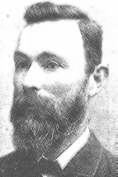
Clarence Herbert Smith
Encyclopedia

Australia
Australia , officially the Commonwealth of Australia, is a country in the Southern Hemisphere comprising the mainland of the Australian continent, the island of Tasmania, and numerous smaller islands in the Indian and Pacific Oceans. It is the world's sixth-largest country by total area...
n agriculturalist, engineer
Engineer
An engineer is a professional practitioner of engineering, concerned with applying scientific knowledge, mathematics and ingenuity to develop solutions for technical problems. Engineers design materials, structures, machines and systems while considering the limitations imposed by practicality,...
, blacksmith
Blacksmith
A blacksmith is a person who creates objects from wrought iron or steel by forging the metal; that is, by using tools to hammer, bend, and cut...
and inventor.
Under the direction of his brother, Richard Bowyer Smith
Richard Bowyer Smith
Richard Bowyer Smith was an Australian inventor.Under R.B. Smith's direction, his brother Clarence Herbert Smith created the first stump-jump plough, entitled the Vixen, in 1876...
, C.H. Smith created the first stump-jump plough
Stump-jump plough
The stump-jump plough is a kind of plough invented in South Australia in the late nineteenth century by Richard Bowyer Smith to solve the particular problem of preparing mallee lands for cultivation.-The problem:...
, entitled the Vixen, in 1876. The South Australian government had offered a reward of £200 to anyone who could develop an effective mechanical stump puller due to frustration with lack of productivity efficiency on its farm
Farm
A farm is an area of land, or, for aquaculture, lake, river or sea, including various structures, devoted primarily to the practice of producing and managing food , fibres and, increasingly, fuel. It is the basic production facility in food production. Farms may be owned and operated by a single...
s with current equipment.
The plough consisted of any number of hinged shares
Ploughshare
A ploughshare or plowshare is a component of a plough or plow.Ploughshare or Plowshare may also refer to:* Operation Plowshare, United States project to use nuclear explosives for civilian purposes* vomer, facial bone in the human skull...
: when the blade encountered an underground obstacle, it would rise out of the ground. Attached weights forced the blade back into the ground after the root was passed, allowing as much of the ground to be furrowed as possible. Although a little unorthodox, it proved remarkably effective, and was dubbed the "stump-jump" plough.

C.H. Smith established a factory in Ardrossan
Ardrossan, South Australia
Ardrossan is a small town on the east coast of the Yorke Peninsula, about 150 km from Adelaide, South Australia.The town was largely initiated by wheat farmers and wheat transporters in the late 19th century who needed infrastructure to ship their produce across the Gulf St. Vincent to Port...
, South Australia
South Australia
South Australia is a state of Australia in the southern central part of the country. It covers some of the most arid parts of the continent; with a total land area of , it is the fourth largest of Australia's six states and two territories.South Australia shares borders with all of the mainland...
during 1880, and started producing ploughs. R.B. Smith was later credited as the inventor of the design by the Parliament of South Australia
Parliament of South Australia
The Parliament of South Australia is the bicameral legislature of the Australian state of South Australia. It consists of the Legislative Council and the House of Assembly. It follows a Westminster system of parliamentary government....
in 1882, however C.H. continued manufacturing them because his brother had allowed the patent to lapse. R.B. Smith relocated to Western Australia
Western Australia
Western Australia is a state of Australia, occupying the entire western third of the Australian continent. It is bounded by the Indian Ocean to the north and west, the Great Australian Bight and Indian Ocean to the south, the Northern Territory to the north-east and South Australia to the south-east...
two years later.
C.H. Smith married Emma Sarah Beck in 1879. Upon his death in 1901, C.H. Smith's business was transferred to his two sons, Glen and Alma. The company, Clarence H. Smith Ltd, ceased operations in 1934, during the Great Depression
Great Depression
The Great Depression was a severe worldwide economic depression in the decade preceding World War II. The timing of the Great Depression varied across nations, but in most countries it started in about 1929 and lasted until the late 1930s or early 1940s...
.

